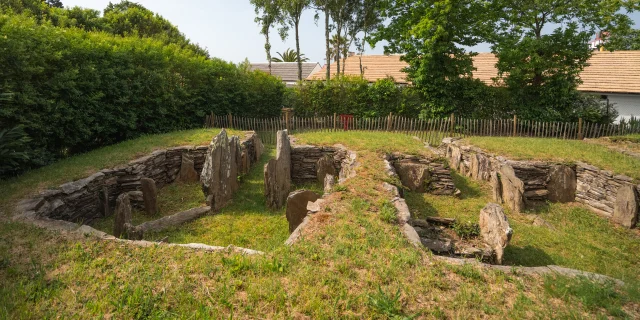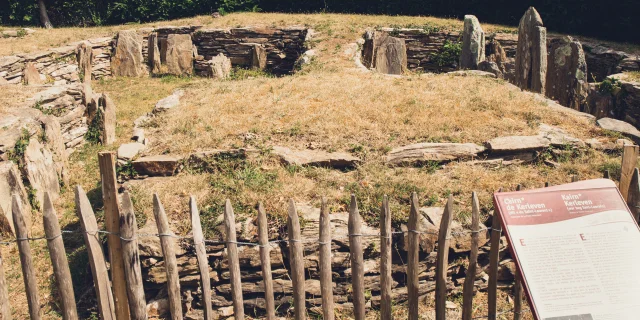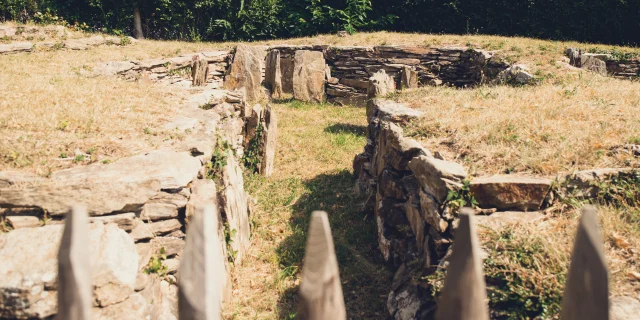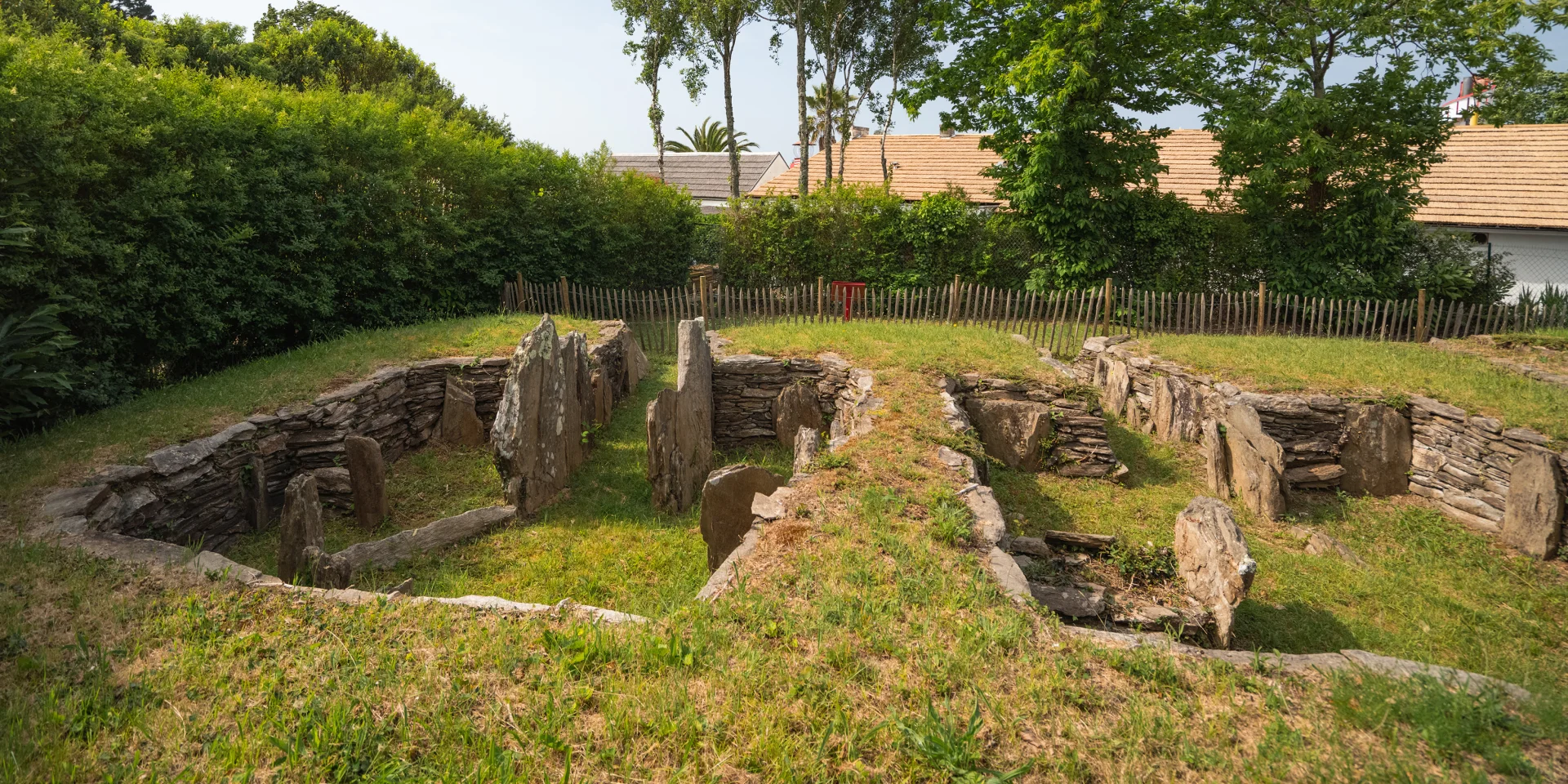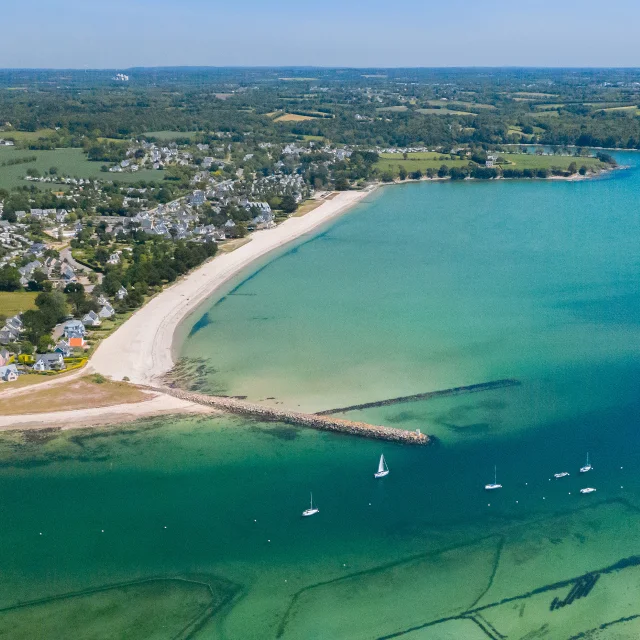An exceptional megalithic site
Discovered in 1961, it was restored in 1962 and 1966. Listed as a historic monument, the cairn dates back to 3,000 BC and is visible but protected by a fence.
The Kerleven cairn is a major megalithic site in Brittany.
In 1961, the building was uncovered when a campsite was developed. Earthworks partially damaged its summit and destroyed the western part. The rectilinear dry-stone enclosure walls delineate a quadrangular plan.
Excavations carried out between 1962 and 1965 brought to light objects characteristic of the Armorican Middle Neolithic. All of the evidence collected dates the site to between 3,000 and 2,700 BC. The exact dimensions have not been confirmed, but they appear to have been 25 metres long and between 8 and 12 metres wide.
Research revealed the existence of three tombs, each with a corridor, although only 2 of the tombs are still visible. At the end of the excavations, the information obtained enabled partial restoration of the building, but some details were missing for a complete reconstruction.
The Kerleven burial mound is one of the region’s most remarkable buildings, and forms part of the group of complex megalithic burial sites in the south of Finistère.
It was listed as a historic monument on 15 April 1965.
The cairn is located within the grounds of the Domaine du Saint-Laurent campsite (access request at reception).
